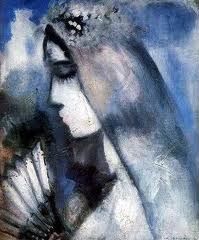New Songs

During COVID I've started composing some melodies for Jewish liturgy, shabbat, hallel, etc.
Below are the songs I feel ready to share – please send me your feedback!
It follows a fairly standard pattern for L'kha Dodi of ABAC.
This melody is pretty straightforward Jewish-sounding, but its rhythms specifically fit the pattern of the Psalm. The Psalm begins with the words Mizmor L'David, which are *not* part of the tune. Note: I am not sure, but I have a feeling some of this melody may be cribbed from someone else's tune – if you recognize a source please let me know!
The tune is mostly the same as L'kha Dodi, though the pattern is ABCA rather than ABAC, and there's one note changed to a sharp. The words come from Psalm 118:5-7.
This tune uses just the A and C parts of L'kha Dodi (and changes one note in the middle of the C part, same as Min Hameitsar), which gives it more elevation. The verses are Psalm 118:21-24. In this part of Hallel, each verse is recited twice.
People who know me might be surprised at such an upbeat carnival-esque tune. The tune follows the tradition of singing each verse three times. The tune is based on the tune for Tsur Mishelo I wrote (next song), but does not include the slightly angsty fourth melodic line.
This song recapitulates all of Birkat Hamazon in its four verses. The pattern is A-A' (chorus repeated) and then B-C for the verses.
To come: tunes to try out for Mah Yedidut and V'shamru.
Someday the first part of this might turn into a singing nigun -- but the range of the whole piece as composed here is too wide for most singers.
 During COVID I've started composing some melodies for Jewish liturgy, shabbat, hallel, etc.
Below are the songs I feel ready to share – please send me your feedback!
During COVID I've started composing some melodies for Jewish liturgy, shabbat, hallel, etc.
Below are the songs I feel ready to share – please send me your feedback!

 During COVID I've started composing some melodies for Jewish liturgy, shabbat, hallel, etc.
Below are the songs I feel ready to share – please send me your feedback!
During COVID I've started composing some melodies for Jewish liturgy, shabbat, hallel, etc.
Below are the songs I feel ready to share – please send me your feedback!